Abstract
The high biting rate of Culex pipiens fatigans in Rangoon, combined with a low prevalence of microfilaraemia due to Wuchereria bancrofti, suggested a poor efficiency of transmission. Data obtained by the WHO Filariasis Research Unit in Rangoon were analysed, and the efficiency of the parasite from Stage III larva in the mosquito to the production of microfilariae was estimated as 6.04-6.71 × 10-5, indicating that an average of around 15 500 bites by “infective” mosquitos is necessary to produce 1 case of microfilaraemia. This surprising result prompted a step-by-step analysis of the success of the parasite through departure from the mosquito, penetration of host tissues, survival to maturity, and encountering a mate in the human host. It was hoped that the second approach would identify some discrepancy in the original analysis, but when all sources of loss were combined, it was estimated that the expected efficiency was 4.78 × 10-5. The two estimates are within observational error of each other. The degree to which the two approaches agree leads to the conclusion that survival of the parasite is reasonably well known at all stages, and the calculations indicate that a high proportion of the population of Rangoon must be carrying parasites that are either dead or immature. A complete quantitative statement of the epidemiology of W. bancrofti seems to be attainable.
Full text
PDF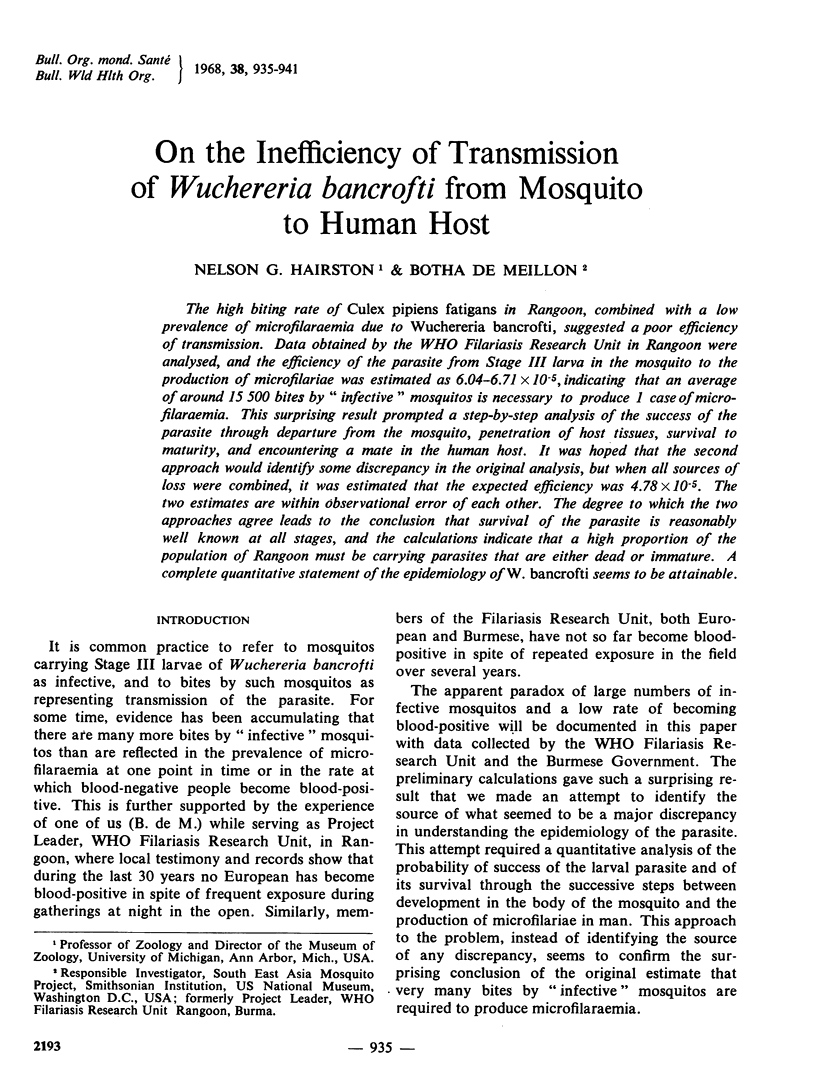
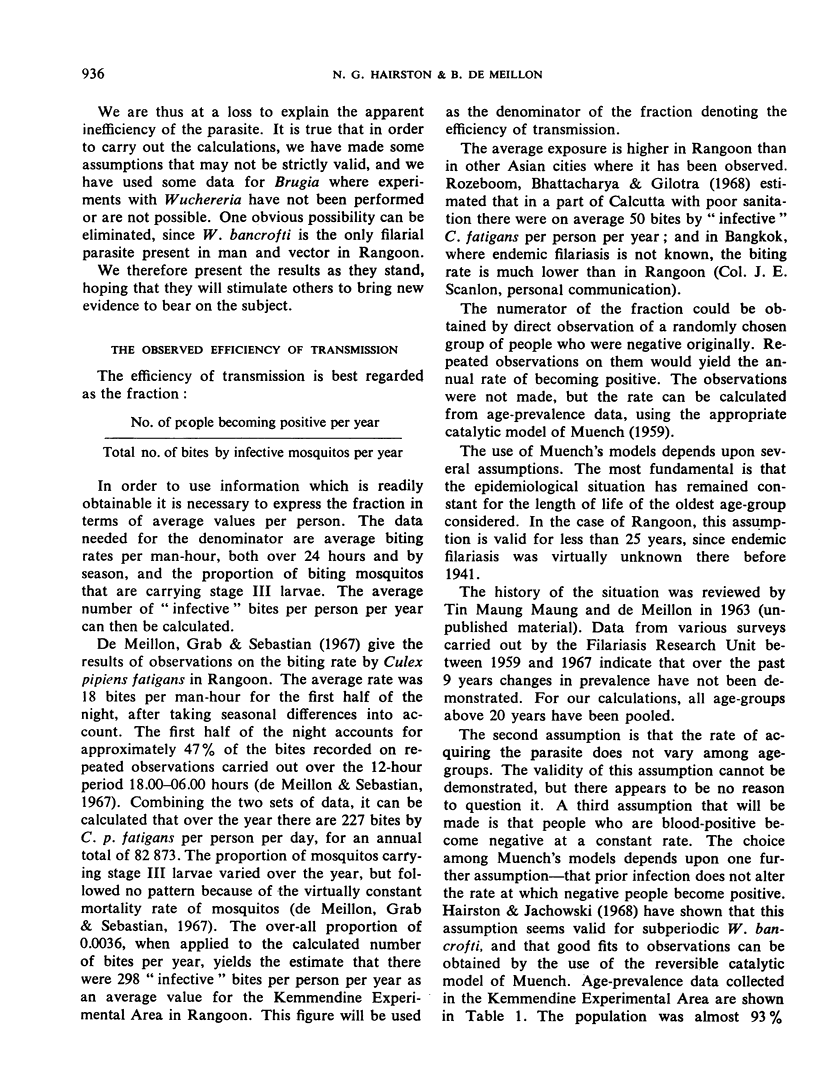
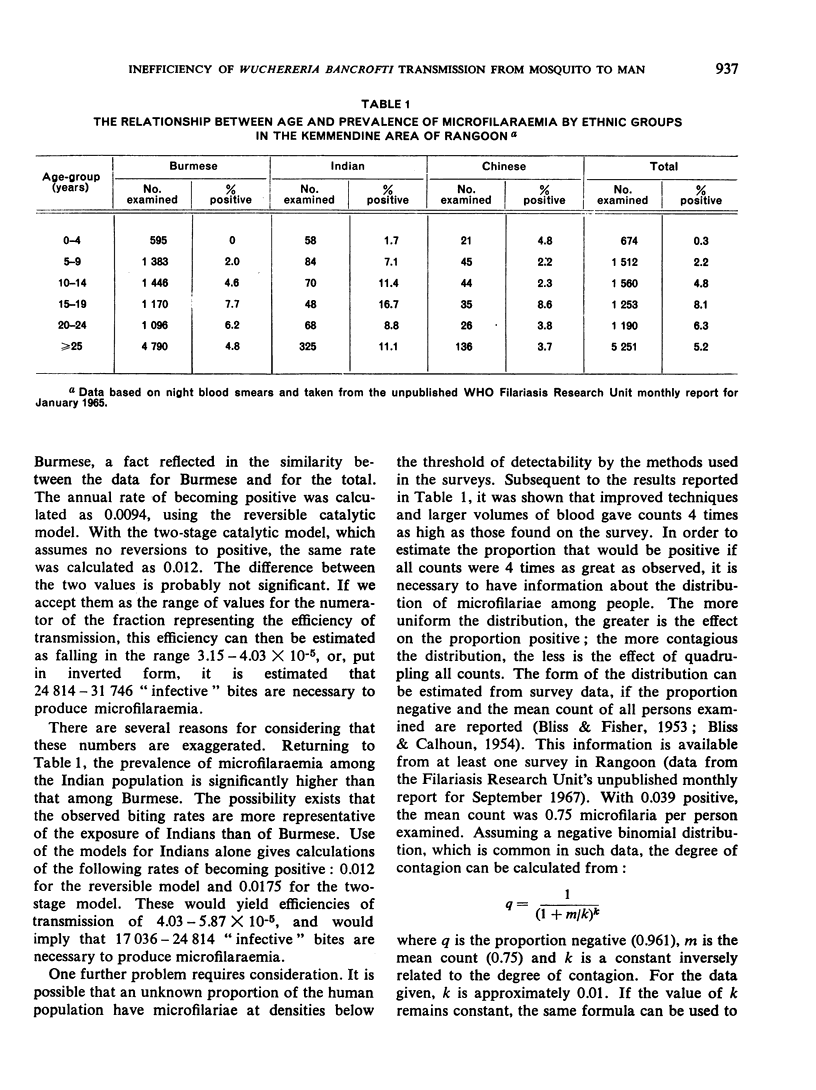

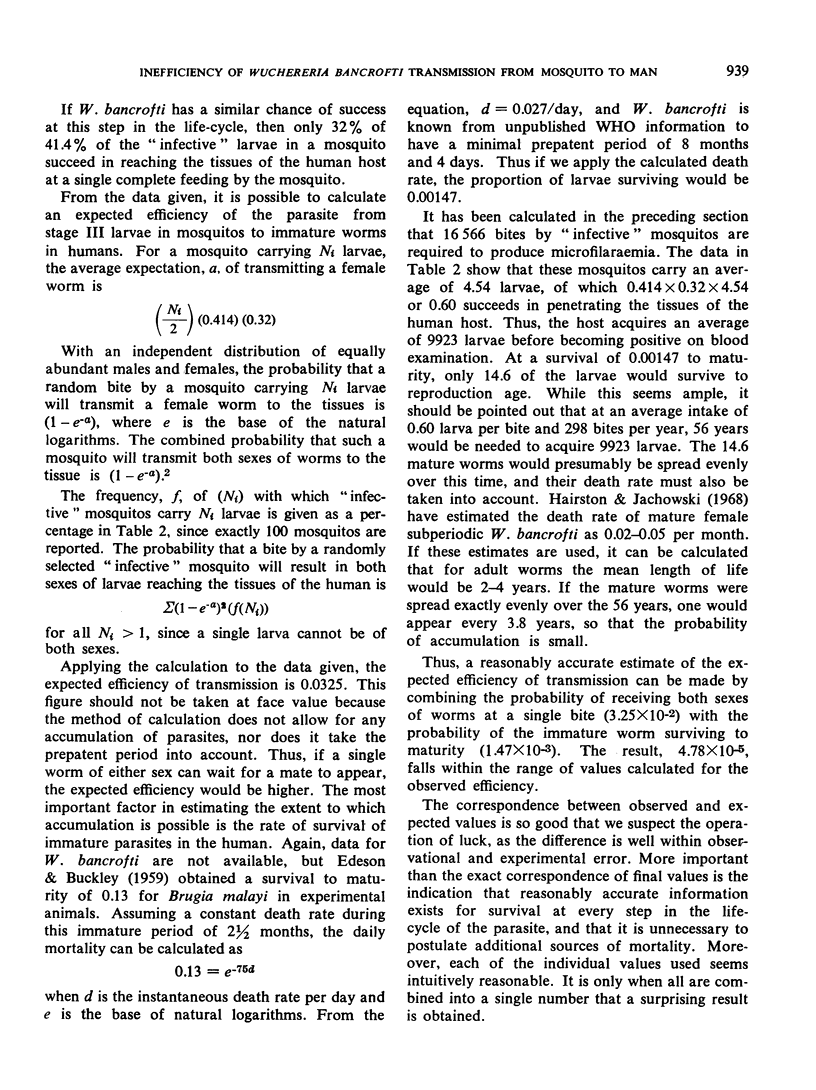
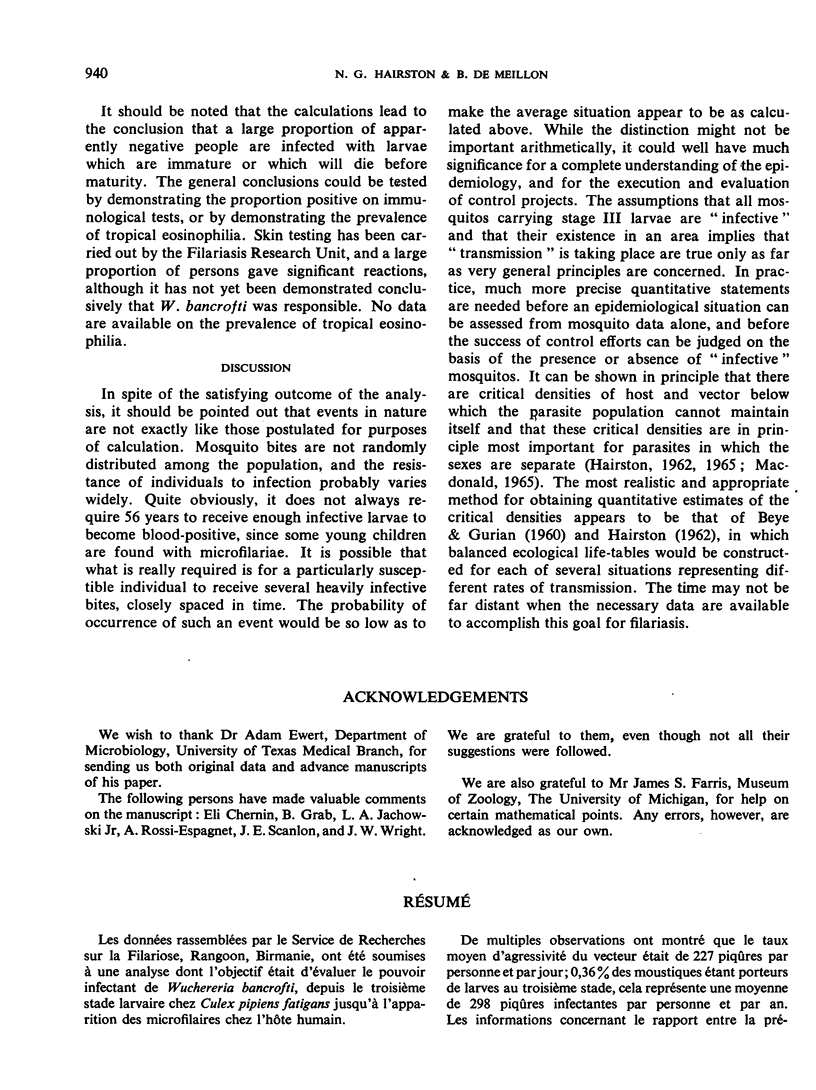
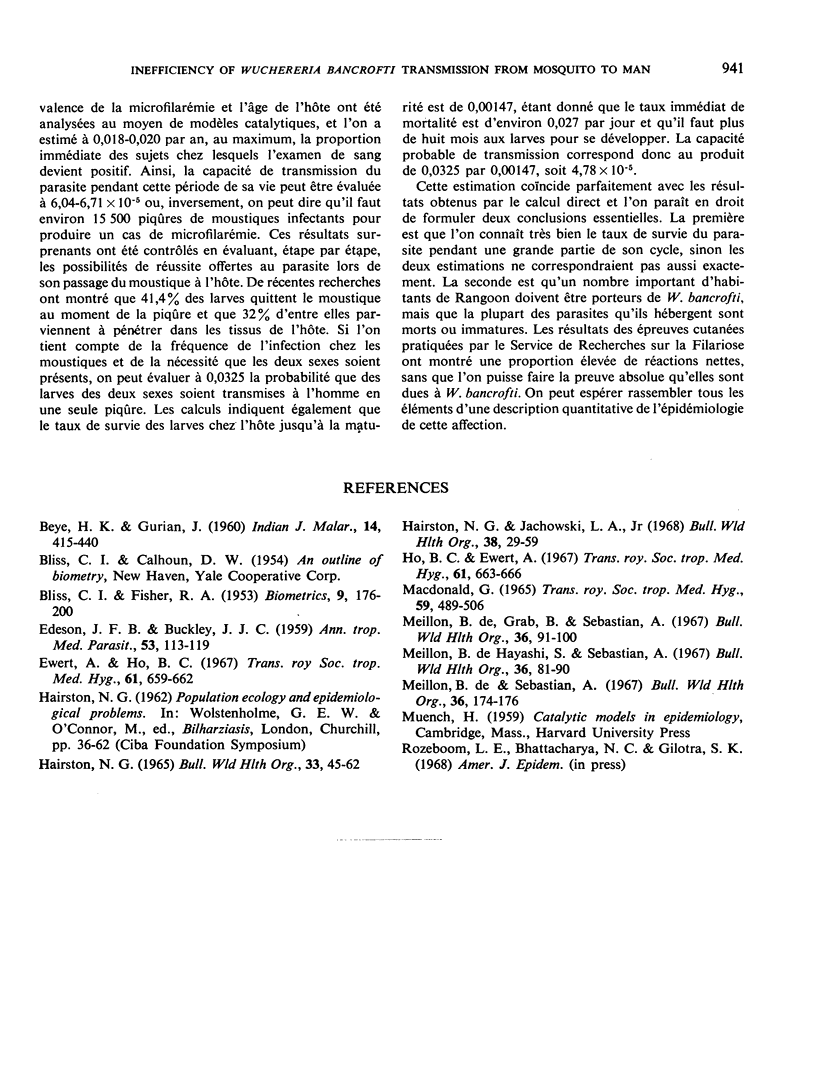
Selected References
These references are in PubMed. This may not be the complete list of references from this article.
- EDESON J. F., BUCKLEY J. J. Studies on filariasis in Malaya: on the migration and rate of growth of Wuchereria malayi in experimentally infected cats. Ann Trop Med Parasitol. 1959 Apr;53(1):113–119. doi: 10.1080/00034983.1959.11685907. [DOI] [PubMed] [Google Scholar]
- Ewert A., Ho B. C. The fate of Brugia pahangi larvae immediately after feeding by infective vector mosquitoes. Trans R Soc Trop Med Hyg. 1967;61(5):659–662. doi: 10.1016/0035-9203(67)90129-0. [DOI] [PubMed] [Google Scholar]
- Hairston N. G. On the mathematical analysis of schistosome populations. Bull World Health Organ. 1965;33(1):45–62. [PMC free article] [PubMed] [Google Scholar]
- Hariston N. G., Jachowski L. A. Analysis of the Wuchereria bancrofti population in the people of American Samoa. Bull World Health Organ. 1968;38(1):29–59. [PMC free article] [PubMed] [Google Scholar]
- Ho B. C., Ewert A. Experimental transmission of filarial larvae in relation to feeding behaviour of the mosquito vectors. Trans R Soc Trop Med Hyg. 1967;61(5):663–666. doi: 10.1016/0035-9203(67)90130-7. [DOI] [PubMed] [Google Scholar]
- Macdonald G. The dynamics of helminth infections, with special reference to schistosomes. Trans R Soc Trop Med Hyg. 1965 Sep;59(5):489–506. doi: 10.1016/0035-9203(65)90152-5. [DOI] [PubMed] [Google Scholar]
- de Meillon B., Grab B., Sebastian A. Evaluation of Wuchereria bancrofti infection in Culex pipiens fatigans in Rangoon, Burma. Bull World Health Organ. 1967;36(1):91–100. [PMC free article] [PubMed] [Google Scholar]
- de Meillon B., Hayashi S., Sebastian A. Infection and reinfection of Culex pipiens fatigans with Wuchereria bancrofti and the loss of mature larvae in blood-feeding. Bull World Health Organ. 1967;36(1):81–90. [PMC free article] [PubMed] [Google Scholar]
- de Meillon B., Sebastian A. The biting cycle of Culex pipiens fatigans on man in Rangoon, Burma, and the microfilarial periodicity. Bull World Health Organ. 1967;36(1):174–176. [PMC free article] [PubMed] [Google Scholar]


